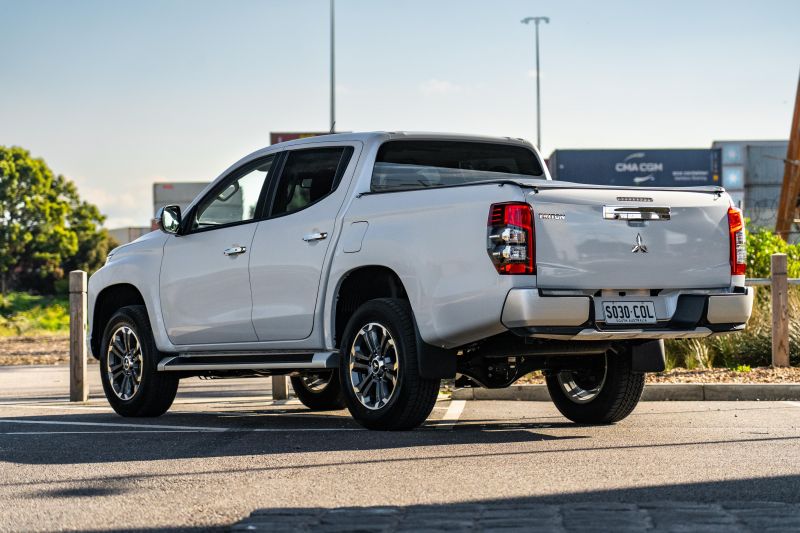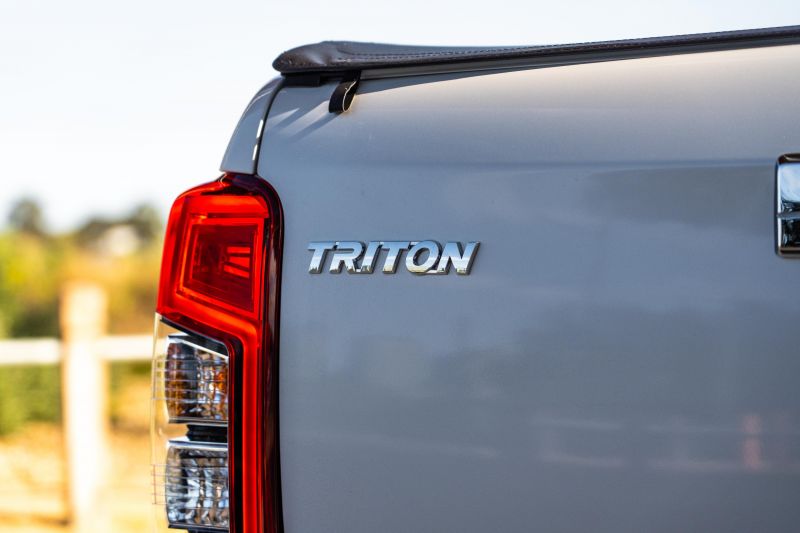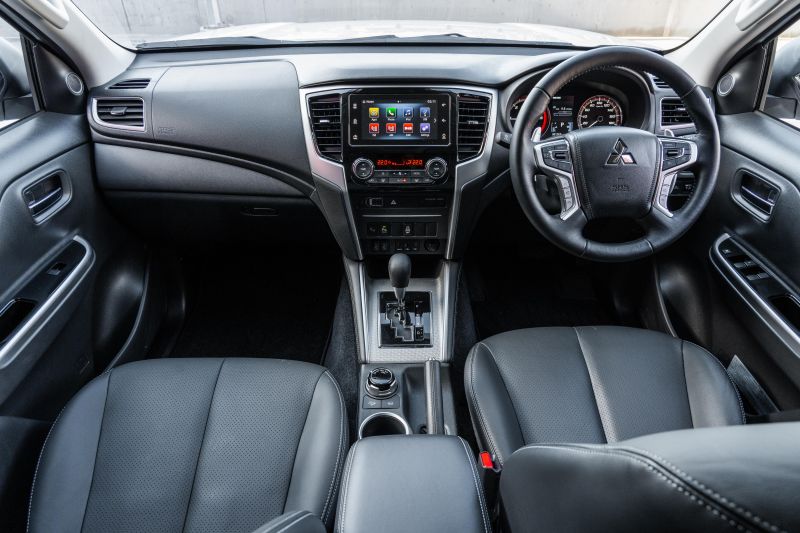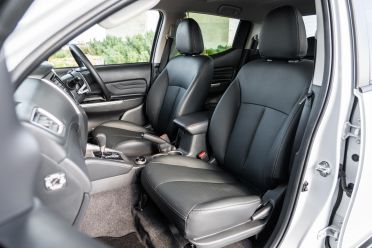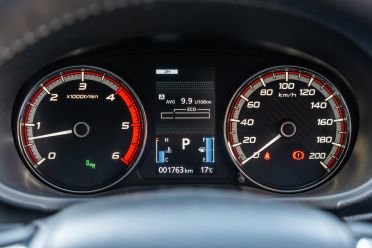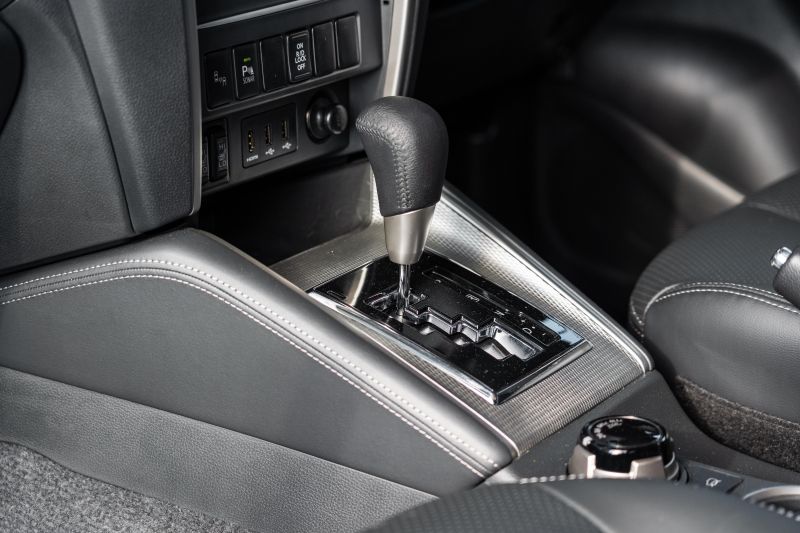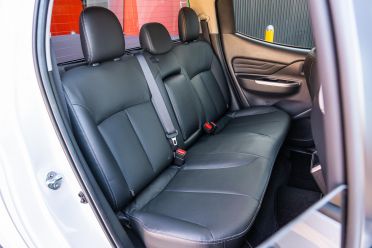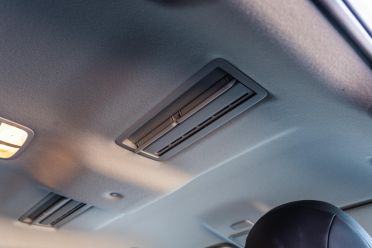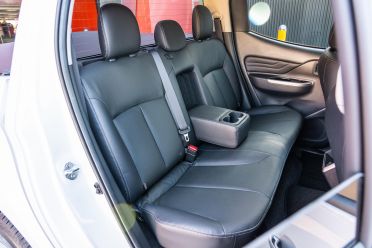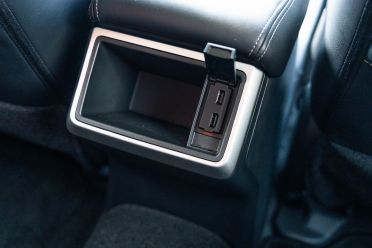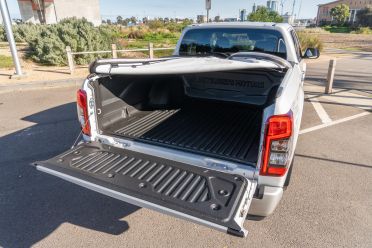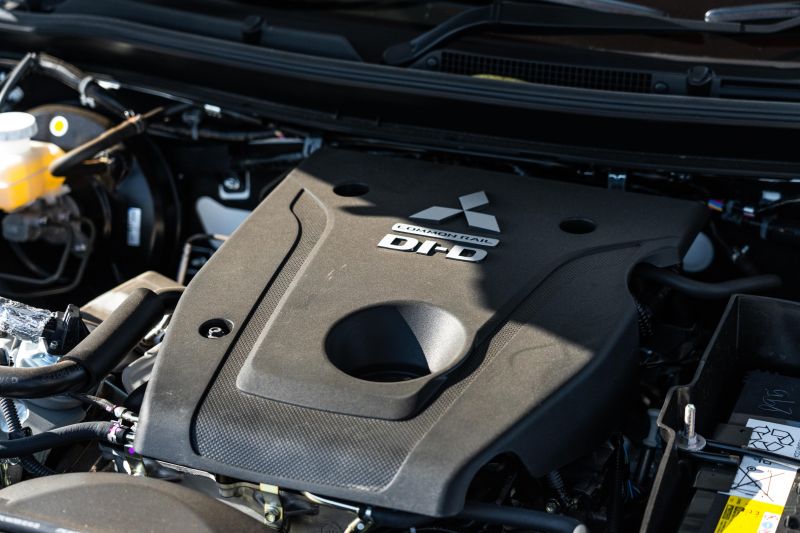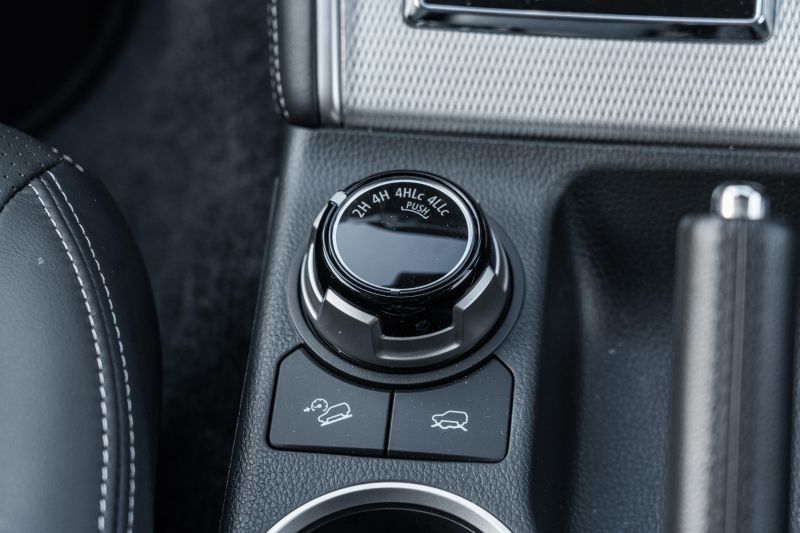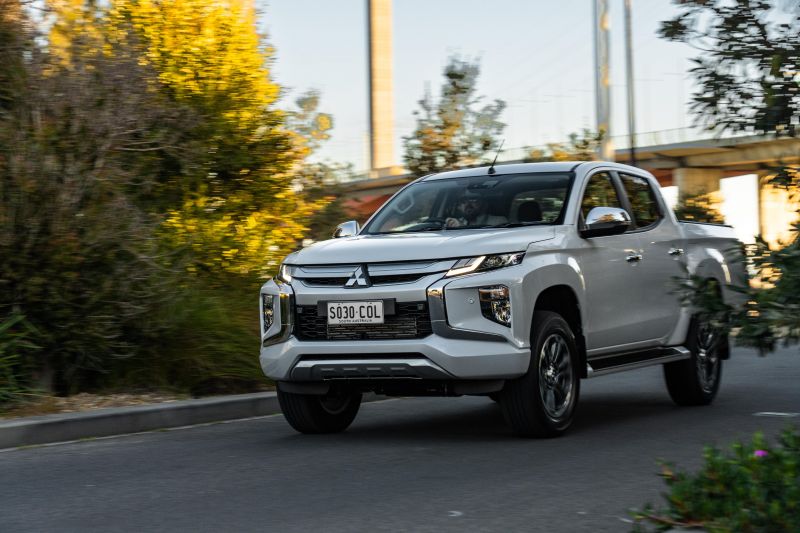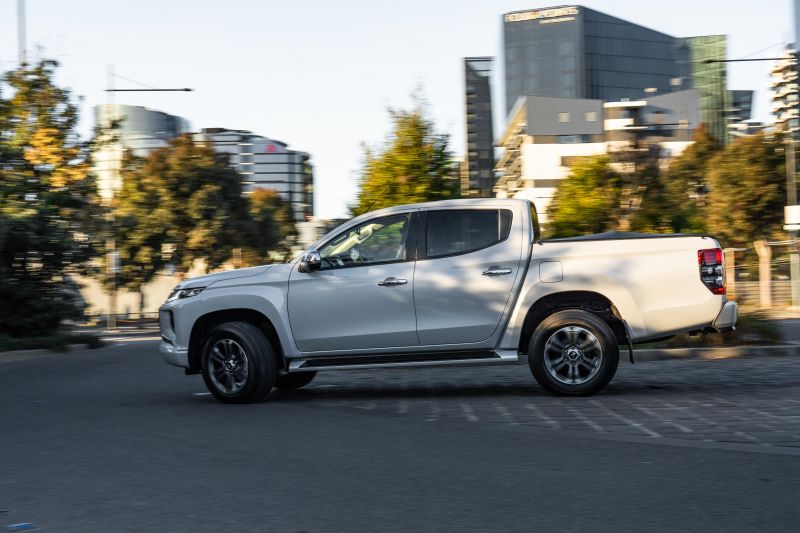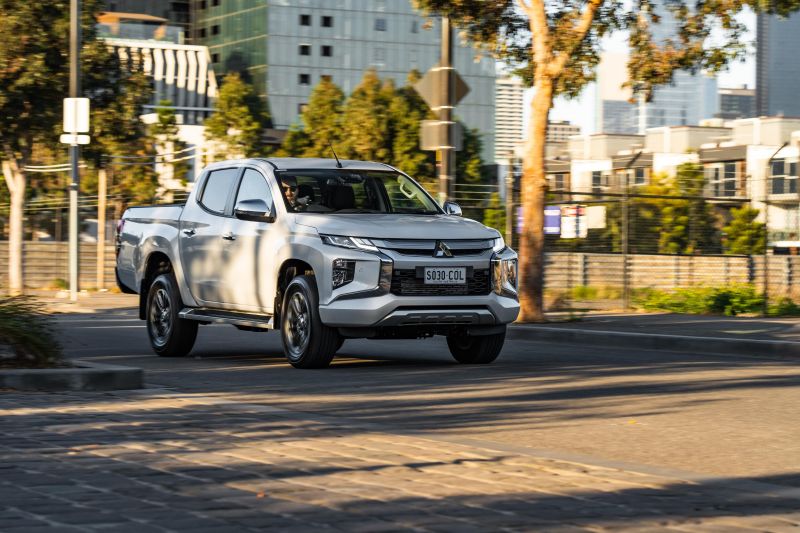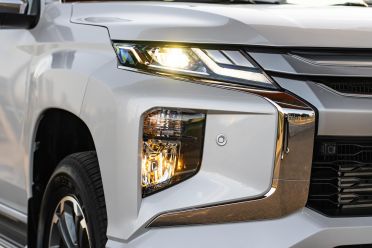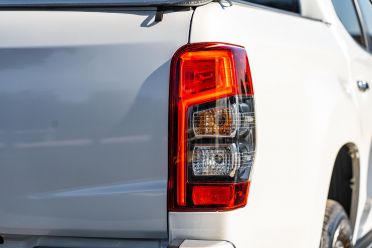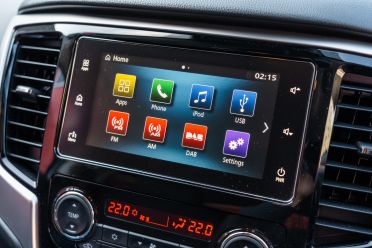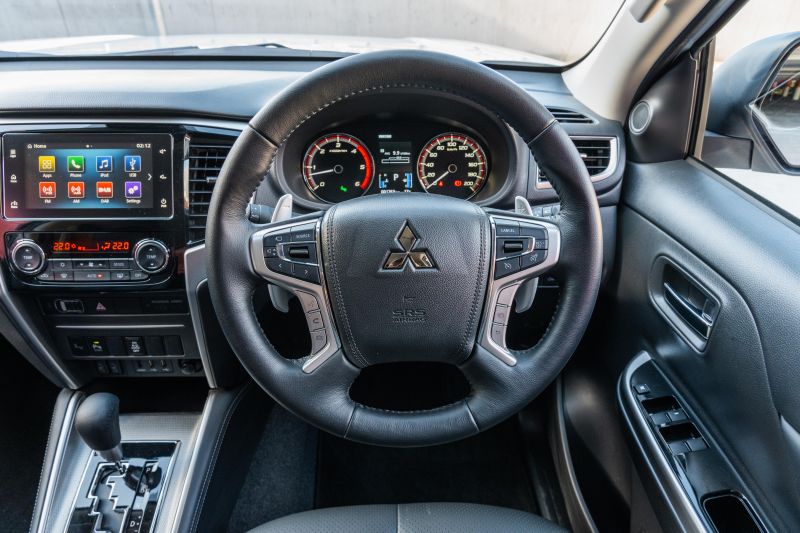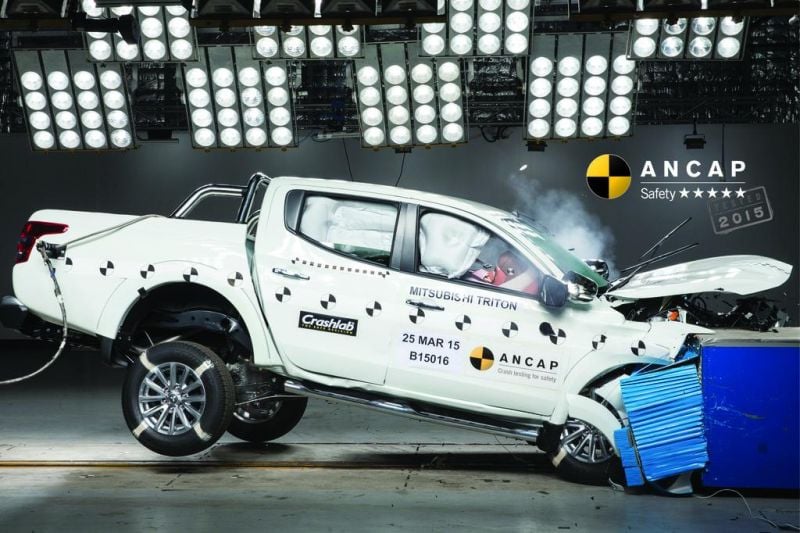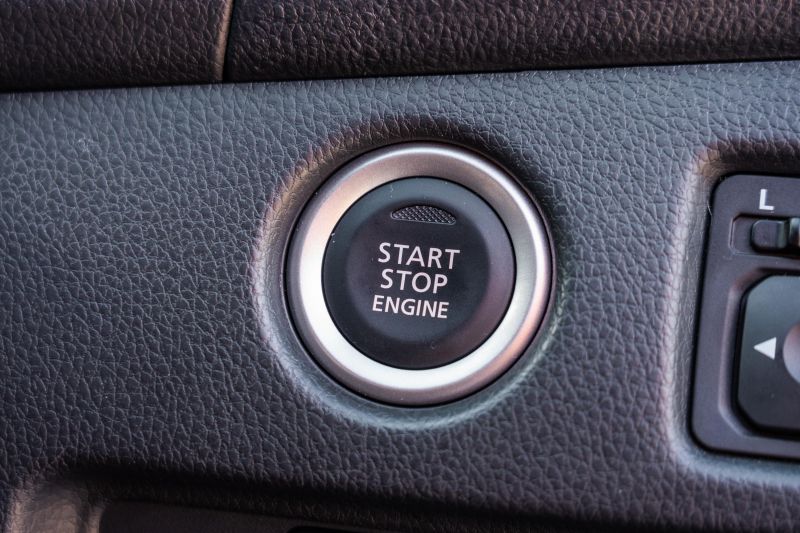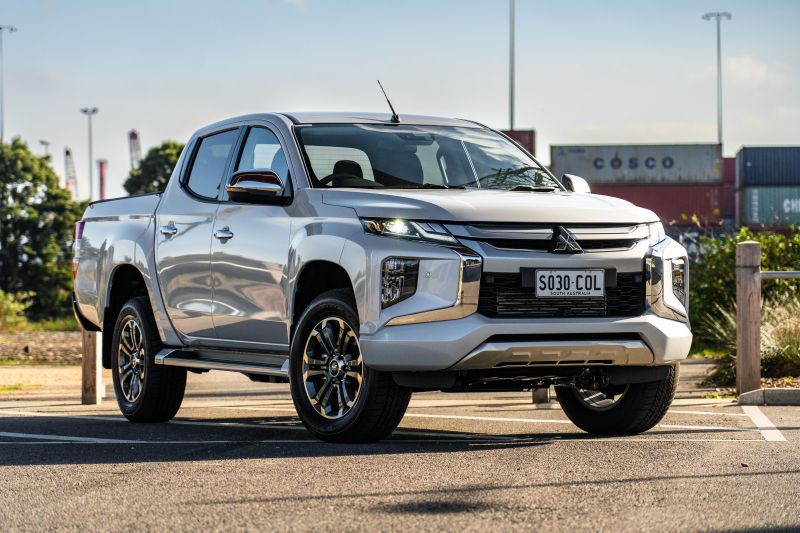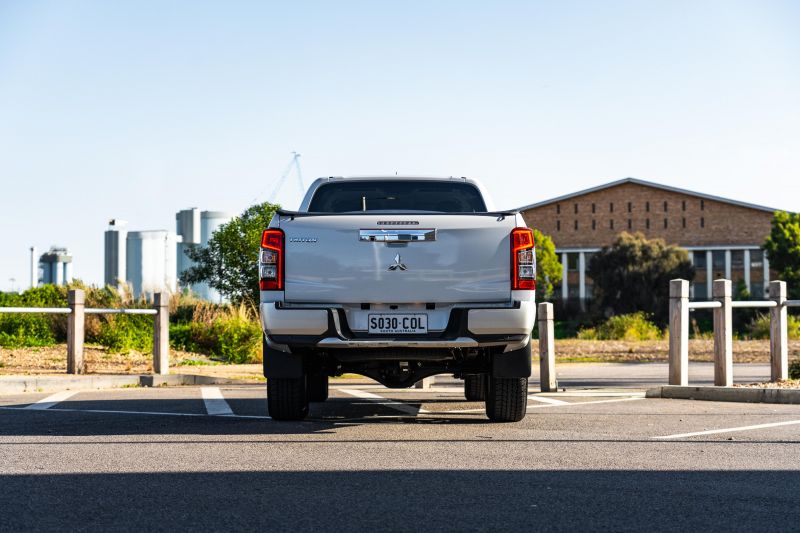Each generation of Mitsubishi Triton typically lasts around 10 years, which means we’re close to the end of this one.
Its successor has already been spied, wearing bluffer, boxier styling and expected to offer some form of electrification.
The current model may have received a significant update in 2019, but it’s showing its age in the ute segment against the likes of the recently redesigned Ford Ranger, Isuzu D-Max and Mazda BT-50.
But Mitsubishi has cleverly positioned the Triton slightly below these vehicles, allowing its more affordable ute to become typically the third or fourth best-selling ute in Australia.
Unfortunately for Mitsubishi, it now faces credible threats from below. The SsangYong Musso is an oft overlooked rival from Korea, while two Chinese utes are gunning for the Triton: the LDV T60, which now offers near class-leading power and torque, while the GWM Ute offers bold styling and a low price.
Does the Triton still have what it takes to stand out against this wave of newer and cheaper rivals alike?

How much does the Mitsubishi Triton GLS cost?
As expected of a ute in this segment, the Mitsubishi Triton is offered with a wide range of variants with a choice of ute or cab-chassis configurations, rear- or four-wheel drive, and Single Cab, Club Cab or Double Cab body styles.
We’ve put the GLS to the test. It sits towards the very top of the range, slotting in under the sportier-looking GSR; a limited-edition Sport is also available for 2023.
Available only with four-wheel drive, the GLS can be had with a manual transmission but we’ve got auto on test. It’s priced from $51,490 before on-road costs, though ours included the Deluxe option – available only on the auto – which brings the price to $54,940 before on-roads.
Premium paint adds $740 except for White Diamond, which is $940.
Sans the Deluxe option, its list price is almost exactly $10,000 less than an Ford Ranger XLT, Isuzu D-Max LS-U, Mazda BT-50 GT or Toyota HiLux SR5, though each of these rival models can be had with fewer creature comforts and yet still more power and torque than the Triton at a more palatable price.
Coming in at an even more palatable price is the LDV T60, which even in Luxe auto guise costs only $43,674 drive-away. A top-spec GWM Ute Cannon-X is $45,490 drive-away, while a SsangYong Musso Ultimate is $42,090 drive-away.
In terms of pricing, then, the Triton is either a comfortable compromise or sitting in some kind of no man’s land, depending on your point of view.
What is the Mitsubishi Triton GLS like on the inside?
With a simple, straightforward and largely ergonomically friendly layout, the Triton’s interior still stacks up well in the segment. Perhaps most importantly, it all feels sturdily assembled.
Where it shows its age the most is in its infotainment. After briefly fitting an aftermarket head unit, the GLS is now back to getting Mitsubishi’s SDA1 system with a 7.0-inch touchscreen and Apple CarPlay/Android Auto.
The new Ford Ranger has embarrassed much of the segment overnight with its higher-tech system, and the Triton falls further behind some of its other rivals.
There’s no factory satellite navigation, for example, which is no good if you’re in a regional area with no reception with which to use Apple Maps or Google Maps. Even though we don’t care for the related Pajero Sport’s navigation, at least it has it. Why is it not in its ute sibling?
At 7.0 inches, the screen is also on the smaller side for this segment and its graphics are dated, though the shortcut buttons are handy. Camera footage isn’t the worst on the market, but it’s a bit blurry and hazy.
The climate controls are situated nice and high on the centre stack, though the passenger seatbelt map is a dated touch – this is usually something now found in the instrument cluster – and the presence of multiple button blanks on a penultimate trim level is galling.
Move a little lower and there’s some attractive metal-look trim, sparing us from the sight of more gloss black trim, while the sides of the centre console are padded with leatherette.
That’s a thoughtful touch far too many brands neglect to employ, though this can be found in lesser Tritons and there hasn’t been much done to distinguish the GLS from these cheaper models.
A manual handbrake is found on the centre tunnel, next to the 4WD mode selector.
In terms of storage, there are bottle holders in the doors that fit 1L bottles, plus an acceptably sized glove compartment and centre-console bin.
The leather seats mightn’t look or feel exceptionally plush but they proved comfortable over long distances, though they have only two-stage (not three-stage) heating. They adjust for height, while the steering wheel tilts and telescopes.
The Deluxe pack’s leather door inserts improve the ambience, though the extensive use of orange backlighting is a bit last decade and the mouse-fur headliner is cheap-looking if common for the segment.
The digital instrument cluster found atop the Pajero Sport range isn’t here, leaving the Triton with the same rubbish old trip computer Mitsubishi has been using for years with no digital speedometer and a less reliable remaining range indicator than rivals.
With two adult males and a more petite adult female in the rear, three-abreast comfort was good; with three burly blokes, it could be a different story.
One passenger also observed back support was good, though the rear bench is slightly low and the floor high, leading to a more knees-up seating position.
The centre seat is raised slightly and the passenger has to straddle a raised driveline hump, but it’s not too uncomfortable. If said seat is unoccupied, you can fold down a centre armrest.
Instead of vents at the rear of the centre console, the Triton features a roof-mounted rear air circulator and vents to ensure airflow to the rear. Our passengers didn’t have any complaints about air flow, though it was a chilly week in Melbourne and not a hot summer’s day in Birdsville.
There are two top-tether and two ISOFIX anchor points for child seats back here, plus two USB-A outlets, map pockets and a small, fairly useless storage cubby.
The Triton’s tray measures 1520mm long, 475mm deep, and 1470mm wide (1085mm between the wheel arches).
That’s around 50mm shorter than a HiLux or D-Max and 60-135mm narrower, though the difference in width between the wheel arches is only 25-40mm compared with those rivals.
What’s under the bonnet?
While most rivals offer two or three different engines, the entire 2023 Triton range uses the same powerplant.
It’s a 2.4-litre four-cylinder turbo-diesel producing 133kW of power and 430Nm of torque. In GLS guise, this can be had with either a six-speed manual or six-speed automatic transmission.
GLS and GSR models receive a more advanced Super Select II four-wheel drive system with a full-time mode you can use on pavement, as well as a rear differential lock.
The Triton outpunches the GWM Ute (120kW/400Nm) but is down in power and torque compared to the Isuzu D-Max, Mazda BT-50 and Nissan Navara, all of which produce 140kW and 450Nm with their top-spec engines. The Ford Ranger, LDV T60 and Toyota HiLux are more powerful still.
Braked towing capacity is 3100kg, less than the 3500kg claims of rivals like the Ranger and D-Max.
Mitsubishi claims combined cycle fuel economy in the GLS auto is 8.6 litres per 100km, or 0.7L/100km thirstier than the manual.
In highway driving we typically saw around 8L/100km, while in rush-hour traffic it hovered around 14L/100km. Over a loop consisting of inner-city, suburban and highway driving, however, we averaged 9.4L/100km.
How does the Mitsubishi Triton GLS drive?
I’ve spent plenty of time behind the wheel of Mitsubishi Tritons, and recalled them as being generally innocuous – not the quickest or smoothest of utes, but rarely objectionable. A weekend spent criss-crossing country Victoria disabused me of that notion.
If you’re the type of owner who likes to load up their dual-cab ute with the family for a drive through the country, be aware the Triton simply isn’t as comfortable as the likes of the Ranger and D-Max.
To wit, nothing in this segment is quite as comfortable as the typical SUV, but the Triton’s ride comfort is worse than key rivals.
The Triton gets jostled about on country roads, heaving over undulations and often feeling unsettled, even over roads that don’t appear all that scarred or uneven. That’s with five adults on board, if an empty tub.
The rear feels a bit skippy on some surfaces but on smoother, flatter roads, the Triton settles down. Expansion joints on bridges are keenly felt, however, if not with a crash then with a thump and a wobble. It takes a moment for the Triton to settle.
The cabin is fairly hushed at highway speeds and it’s decently refined at idle, though there’s the ever-present diesel clatter typical of vehicles in this segment.
The Triton’s suite of safety technology is looking somewhat sparse against newer rivals like the latest Ranger, D-Max, BT-50 and GWM Ute.
There’s no lane-keep assist let alone any kind of lane centring, nor is there adaptive cruise control despite the latter being found on the related Pajero Sport, which means these newer rivals are easier to drive on the highway than the Triton.
While I’ve griped about the heavy steering in the Pajero Sport, this level of weighting feels more suited to the Triton. It makes it a bit more of a handful to park than some rivals and it does feel a bit vague, but it isn’t objectionable.
The transmission has no problem finding the correct gear, rendering those lovely paddle shifters rather extraneous.
The full-time four-wheel drive system is something a large number of rivals can’t match, and gives you a 4WD Auto mode you can use on the bitumen in inclement weather. Even on some slicker roads in two-wheel drive mode, the rear didn’t become a handful, but we still welcome the option to knock it into 4WD when it starts pouring or snowing.
The Triton’s turbo-diesel may be down on power and torque compared to some rivals, but there’s still enough of the low-end grunt expected in this class. It can get out of its own way, though it never feels quick.
What do you get?
Triton GLS highlights:
- LED headlights, daytime running lights
- Keyless entry and start
- 6-speaker sound system
- Front parking sensors
- Automatic high-beam
- Power-folding exterior mirrors
- Dual-zone climate control
- Blind-spot monitoring
- Rear cross-traffic alert
- Paddle shifters
The $3000 Deluxe option adds:
- Power driver’s seat
- Heated front seats
- Leather upholstery
- Leather door inserts
- Surround-view cameras
Features carried over from lesser Tritons include:
- Leather-wrapped steering wheel and shifter
- Climate control air-conditioning
- Roof-mounted rear air circulator
- 7.0-inch touchscreen infotainment system
- Wired Apple CarPlay, Android Auto
- DAB+ digital radio
- Automatic LED headlights
- Rain-sensing wipers
- Chrome door handles, mirrors
- Privacy glass
- Front fog lights
- Side steps
- Rear differential lock
While the Triton GLS’s feature list stacks up well against similarly priced variants in the HiLux, Ranger and D-Max line-ups, it’s not as generous as that of the top-spec GWM Ute and Musso.
The GWM Ute Cannon-X, for example, offers a wireless phone charger, digital instrument display and power-adjustable passenger seat, while a Musso Ultimate gets ventilated front seats and a heated steering wheel, and with the Luxury Pack ups the ante with Nappa leather upholstery, heated rear seats and a sunroof.
Is the Mitsubishi Triton GLS safe?
When the Mitsubishi Triton was tested by ANCAP in 2015, it received a rating of five stars.
That rating was based on a frontal offset score of 15.22 out of 16 and a side impact score of 16 out of 16. Whiplash and pedestrian protection were rated Good and Acceptable, respectively.
All 2023 Mitsubishi Triton models come standard with front, side and curtain airbags, as well as a driver’s knee airbag and anti-lock brakes.
Almost all come with autonomous emergency braking (AEB) with forward-collision warning, as well as lane departure warning. The GLS has these, plus blind-spot monitoring and rear cross-traffic alert.
Features absent from the Triton but found in key rivals include lane-keep assist, lane centring, traffic sign recognition, and adaptive cruise control.
How much does the Mitsubishi Triton GLS cost to run?
Mitsubishi’s standard warranty covers five years or 100,000km, but so long as you return to one of its dealerships at each service this extends to 10 years or 200,000km.
Servicing at dealerships also lets you take advantage of Mitsubishi’s 10 years of capped-price servicing. Maintenance in the Triton is required every 12 months or 15,000km – whichever comes first.
Service pricing:
- Service 1: $399
- Service 2: $499
- Service 3: $499
- Service 4: $699
- Service 5: $499
- Service 6: $699
- Service 7: $499
- Service 8: $999
- Service 9: $599
- Service 10: $699
Service pricing is average for the segment, though the Triton boasts the longest availability of capped-price servicing. Over the first four years, it’ll cost $2096, while a Ranger costs $1316, a GWM Ute $1340, and a D-Max $1996.
CarExpert’s Take on the Mitsubishi Triton GLS
The Mitsubishi Triton isn’t the most powerful ute in its segment, nor is it the newest. It’s not the most affordable, nor does it have the latest in technology.
Its infotainment feels outdated and lacks embedded satellite navigation, it’s missing some of the driver assist features found in newer rivals such as adaptive cruise control, and its ride quality is mediocre.
What it arguably does have is a more robust reputation than the likes of GWM, LDV and SsangYong, even if those brands have continued to improve their offerings over the years.
With a more extensive dealer network than any of those brands plus a long warranty and capped-price servicing scheme, that may well be enough to get buyers to opt for the Triton over its more affordable challengers.
It may be down on power and torque against the likes of a D-Max or Ranger, but the Triton offers more kit for less money plus a sophisticated four-wheel drive system, making it a worthy alternative to these pricier rivals.
It might be in the twilight years of its life, but we reckon – potential supply chain issues aside – the current Triton is likely to stay towards the top of the sales charts.
Click the images for the full gallery





